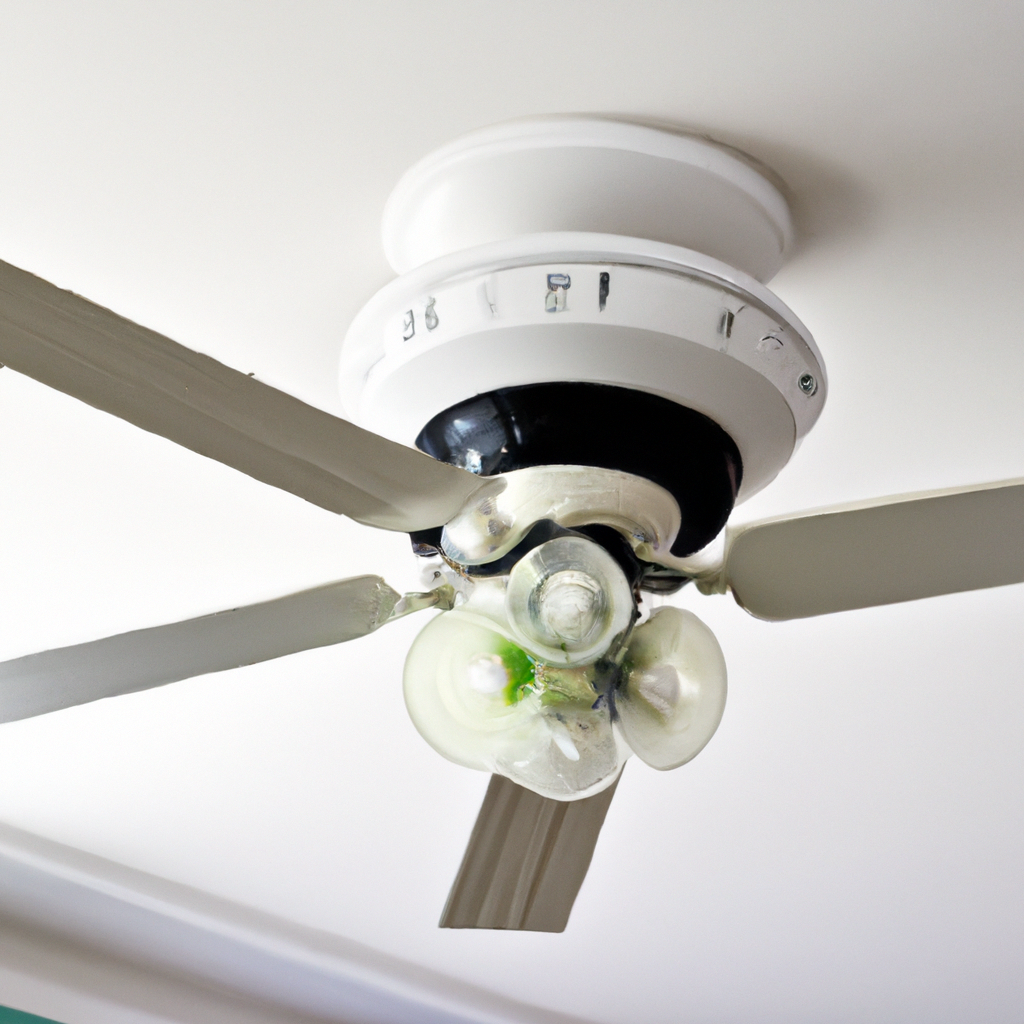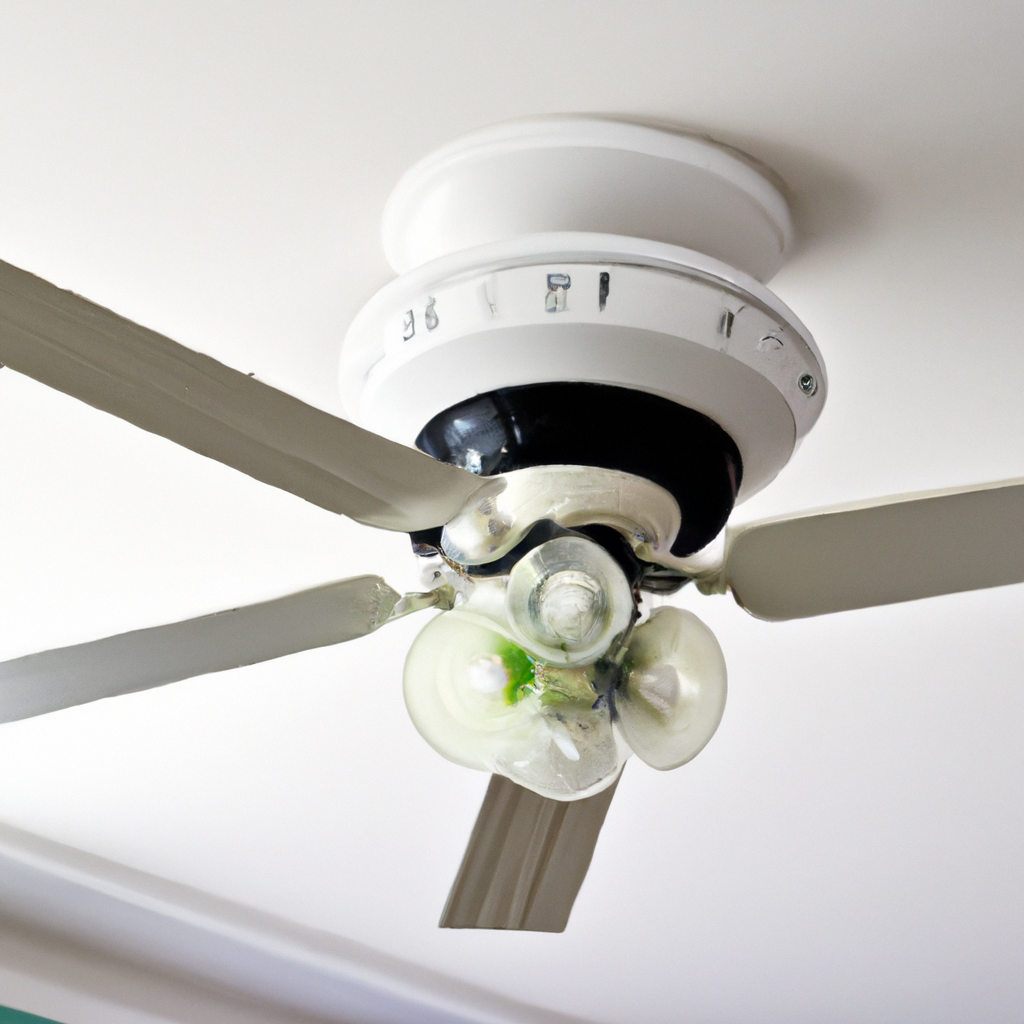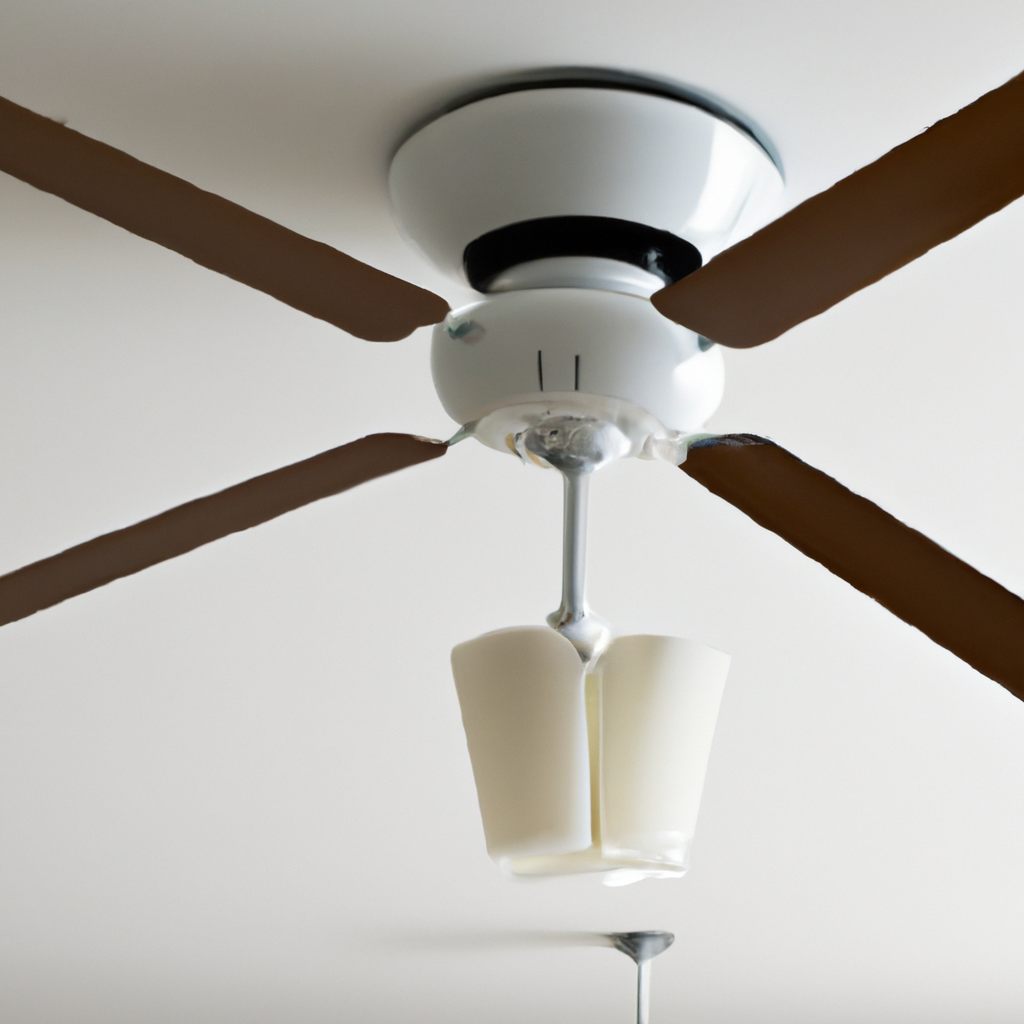
Thinking of installing a new ceiling fan with a remote control but not sure where to start? Look no further! In this article, we will guide you through the step-by-step process of installing your new ceiling fan with ease. From gathering the necessary tools to connecting the wires correctly, we’ve got you covered. So grab your toolbox and let’s get started on enhancing your comfort and convenience with a brand new ceiling fan!

Choosing the Right Ceiling Fan
When it comes to choosing the right ceiling fan for your space, there are a few factors you need to consider. First and foremost, you need to think about the size of the room. Ceiling fans come in various sizes, so it’s important to choose one that is proportional to the room. A small fan will not effectively circulate the air in a large room, while a large fan may overpower a small room.
Next, you need to determine the fan mounting type. There are two main types of mounting: flush mount and downrod mount. Flush mount fans are installed directly onto the ceiling, making them ideal for rooms with low ceilings. On the other hand, downrod mount fans are installed using a downrod, which allows for more air circulation and is suitable for rooms with higher ceilings. Consider the height of your ceiling to determine the appropriate mounting type for your fan.
Lastly, you should check the ceiling height. The standard height for ceilings is 8 to 9 feet. If your ceiling is higher than that, you may need to purchase an extended downrod to ensure the fan is installed at the proper height. It’s important to have enough clearance between the fan blades and the floor to ensure safe and efficient operation.
Gathering the Necessary Tools and Materials
Before you begin the installation process, it’s important to gather all the necessary tools and materials. Here’s a list of what you’ll need:
- Ceiling Fan Kit: Make sure you have a complete fan kit, which usually includes the fan motor, blades, mounting bracket, downrod, and any necessary hardware.
- Screwdriver: You’ll need a screwdriver to loosen and tighten screws during the installation process.
- Wire Nuts: Wire nuts are used to securely connect wires together.
- Wire Strippers: These are handy for removing the insulation from the ends of wires.
- Ladder: Depending on the height of your ceiling, you may need a ladder to reach the installation area safely.
Having all these tools and materials ready before you begin will make the installation process much smoother.
Preparing the Ceiling
Before you can start installing the ceiling fan, you need to prepare the ceiling. The first step is to turn off the power to the room. Locate the circuit breaker or fuse box and switch off the power supply to the room where you’ll be installing the fan. This will ensure your safety while working with electrical components.
Next, remove the existing fixture from the ceiling. This may involve unscrewing screws or disconnecting wires. Once the fixture is removed, take a moment to inspect the electrical box. Make sure it’s securely attached to the ceiling and in good condition. If you notice any damage or loose connections, it’s best to address these issues before installing the new fan.
Assembling the Ceiling Fan
Once the ceiling is prepared, it’s time to assemble the ceiling fan. Start by reading and following the manufacturer’s instructions carefully. Each fan may have specific assembly steps, so it’s important to adhere to the provided instructions.
Begin by attaching the mounting bracket to the electrical box on the ceiling. This bracket will provide support for the fan. Make sure it is securely fastened to the box and aligned correctly.
Next, install the downrod. The downrod connects the motor housing of the fan to the mounting bracket. Insert the downrod into the mounting bracket and tighten any screws or bolts to secure it in place. Ensure that the downrod is straight and level.

Electrical Connections
Now it’s time to make the electrical connections for the ceiling fan. Start by locating the ceiling fan wires. These wires will extend from the motor housing of the fan. They are usually color-coded for easy identification. Typically, you’ll find a neutral wire (usually white or gray), a hot wire (usually black or red), and a ground wire (usually green or bare copper).
To connect the wires, start by matching the corresponding colors. Twist the exposed ends of each wire together, making sure they are securely connected. Once the wires are twisted together, use wire nuts to cover and protect the connections. It’s important to ensure that each wire connection is secure and that no exposed wires are left.
Mounting the Ceiling Fan
With the electrical connections made, it’s time to mount the ceiling fan. With the help of a friend or a sturdy ladder, carefully lift the fan and position it onto the mounting bracket. The fan should fit snugly onto the bracket.
Once the fan is in position, secure it to the bracket using the provided screws or bolts. Make sure the fan is level and properly aligned with the bracket. Tighten the screws or bolts securely to ensure the fan is stable and won’t wobble during operation.

Installing the Fan Blades
Now that the fan is mounted, it’s time to install the fan blades. Each fan blade should have pre-drilled holes that align with the motor housing. Attach each blade to the motor housing using the provided screws or bolts. Make sure each blade is securely fastened to the motor housing to prevent any accidents or damage during operation.
Double-check each blade to ensure it is properly aligned and balanced. While slight imbalances are normal, excessive wobbling or unevenness may indicate a problem. Adjust and tighten the screws or bolts if necessary to achieve a balanced and secure installation.
Installing the Remote Control
If your ceiling fan comes with a remote control, you’ll need to install the remote receiver. Locate the remote receiver, which is typically a small box that needs to be placed inside the motor housing of the fan. Find the wires that extend from the receiver and connect them to the corresponding wires from the fan. Use wire nuts to secure the connections and prevent any loose wires.
Once the connections are secure, find a suitable location inside the motor housing to place the remote receiver. Make sure it is securely fastened and won’t interfere with the fan blades or motor.

Completing the Installation
Before finishing up the installation, it’s crucial to double-check all the connections. Ensure that the wires are securely connected and covered with wire nuts. Take a moment to inspect the fan canopy, which is the decorative cover that conceals the electrical components. Make sure it is properly secured and aligned with the fan.
Finally, turn on the power to the room by flipping the circuit breaker or switch. This will restore electrical power to the fan. Listen for any unusual sounds or vibrations, as it may indicate a problem. If everything sounds and looks good, congratulations! You have successfully installed your new ceiling fan.
Testing and Troubleshooting
After the installation is complete, it’s time to test the fan and remote control. Turn on the fan using the remote control and check that it operates smoothly and quietly. Test all the fan speeds and any additional features that may be available on the remote control.
If you notice any issues during testing, don’t worry. Ceiling fan installation can sometimes present challenges. The best way to troubleshoot problems is to double-check all the connections and ensure they are secure. Make sure the electrical power is turned off before making any adjustments.
If you’re still having trouble, refer back to the manufacturer’s instructions or contact their customer support for assistance. They will be able to provide guidance and troubleshoot any specific issues you may be facing.
In conclusion, installing a new ceiling fan with a remote control can be a fairly straightforward process, as long as you follow the manufacturer’s instructions and take the necessary safety precautions. By considering the size of the room, determining the mounting type, and checking the ceiling height, you can choose the right fan for your space. Gathering the necessary tools and materials, preparing the ceiling, assembling the fan, making the electrical connections, mounting the fan, installing the fan blades, and setting up the remote control are all crucial steps in ensuring a successful installation. Remember to thoroughly test the fan and troubleshoot any issues before enjoying the comfort and functionality that a ceiling fan with remote control can provide.
